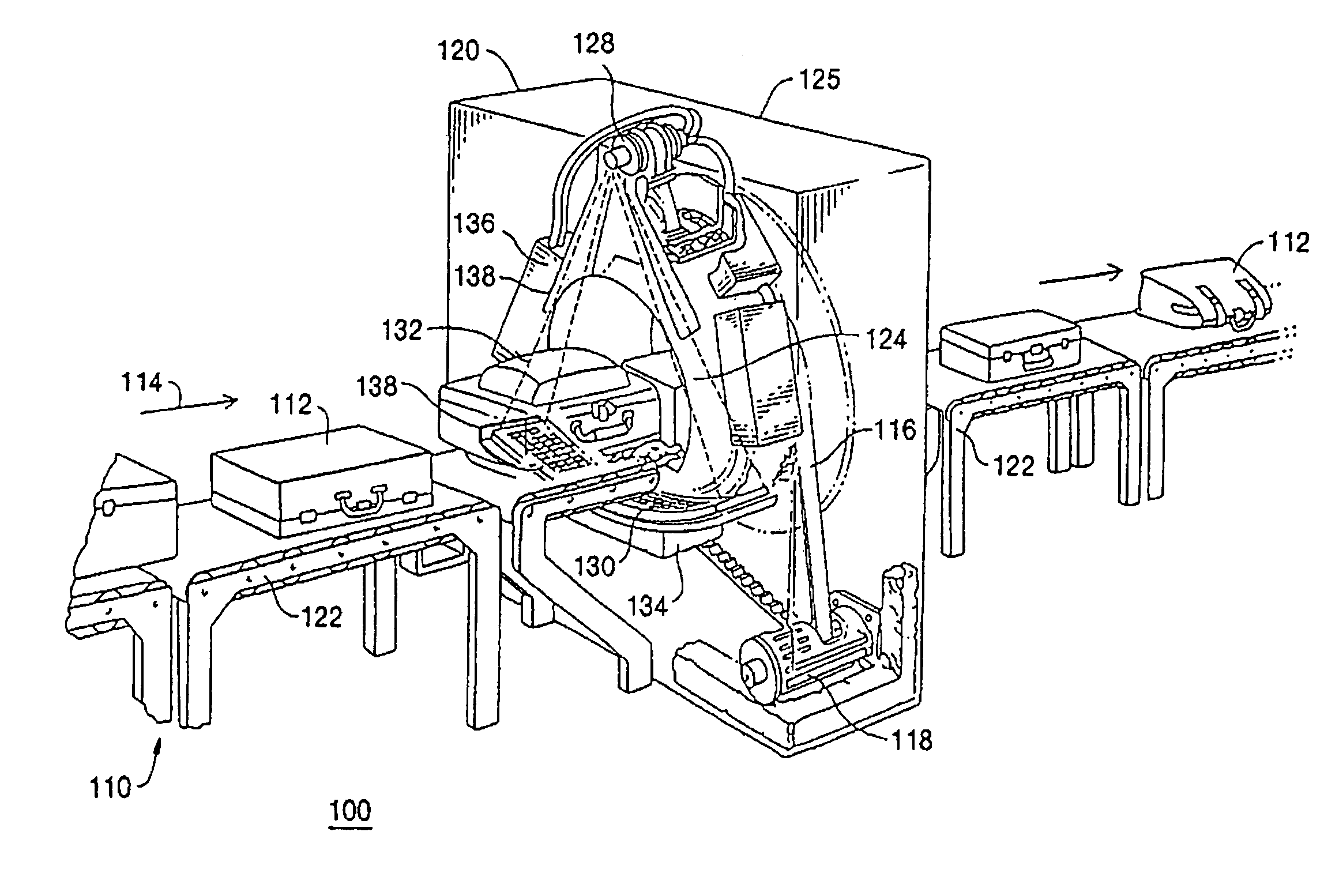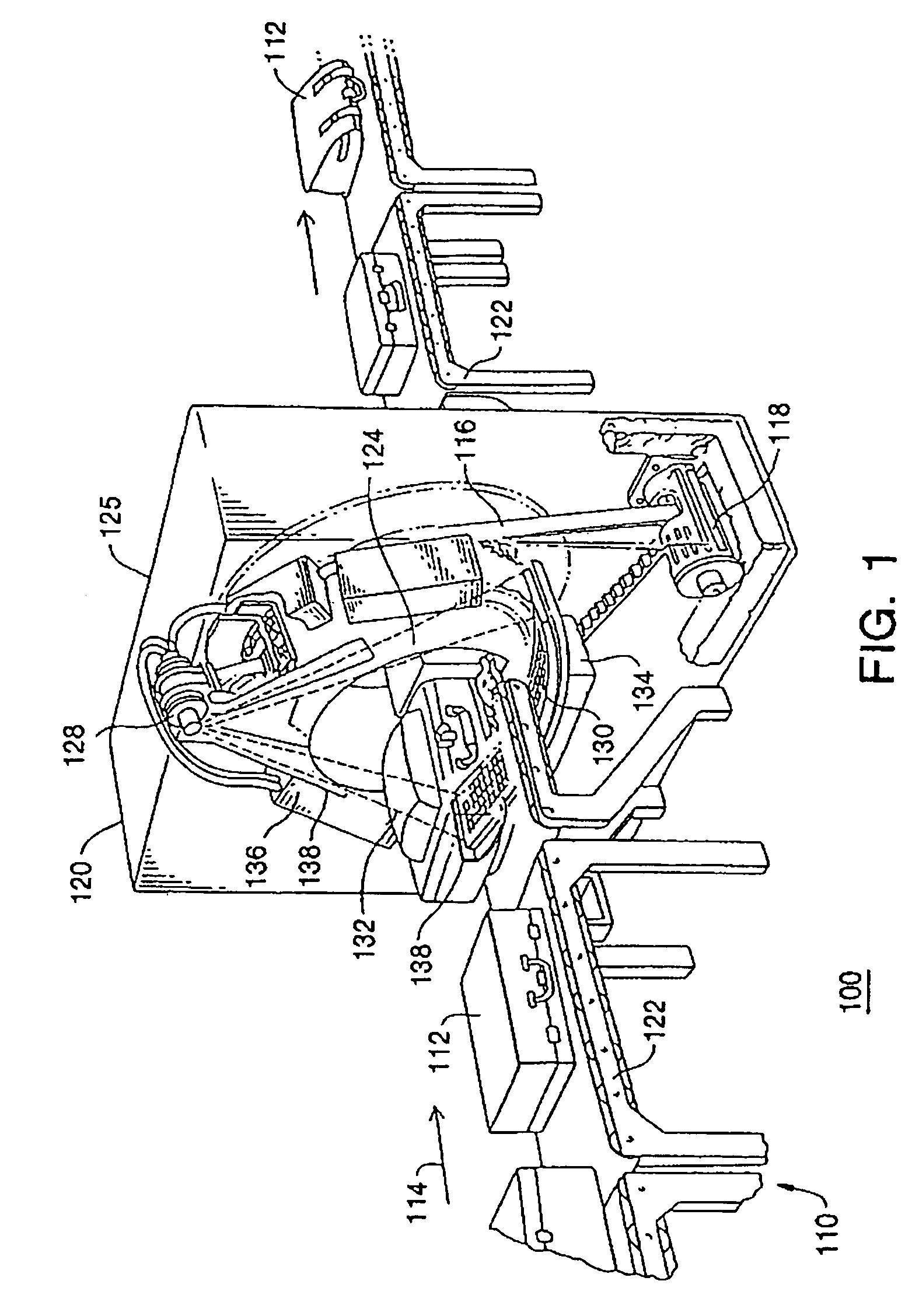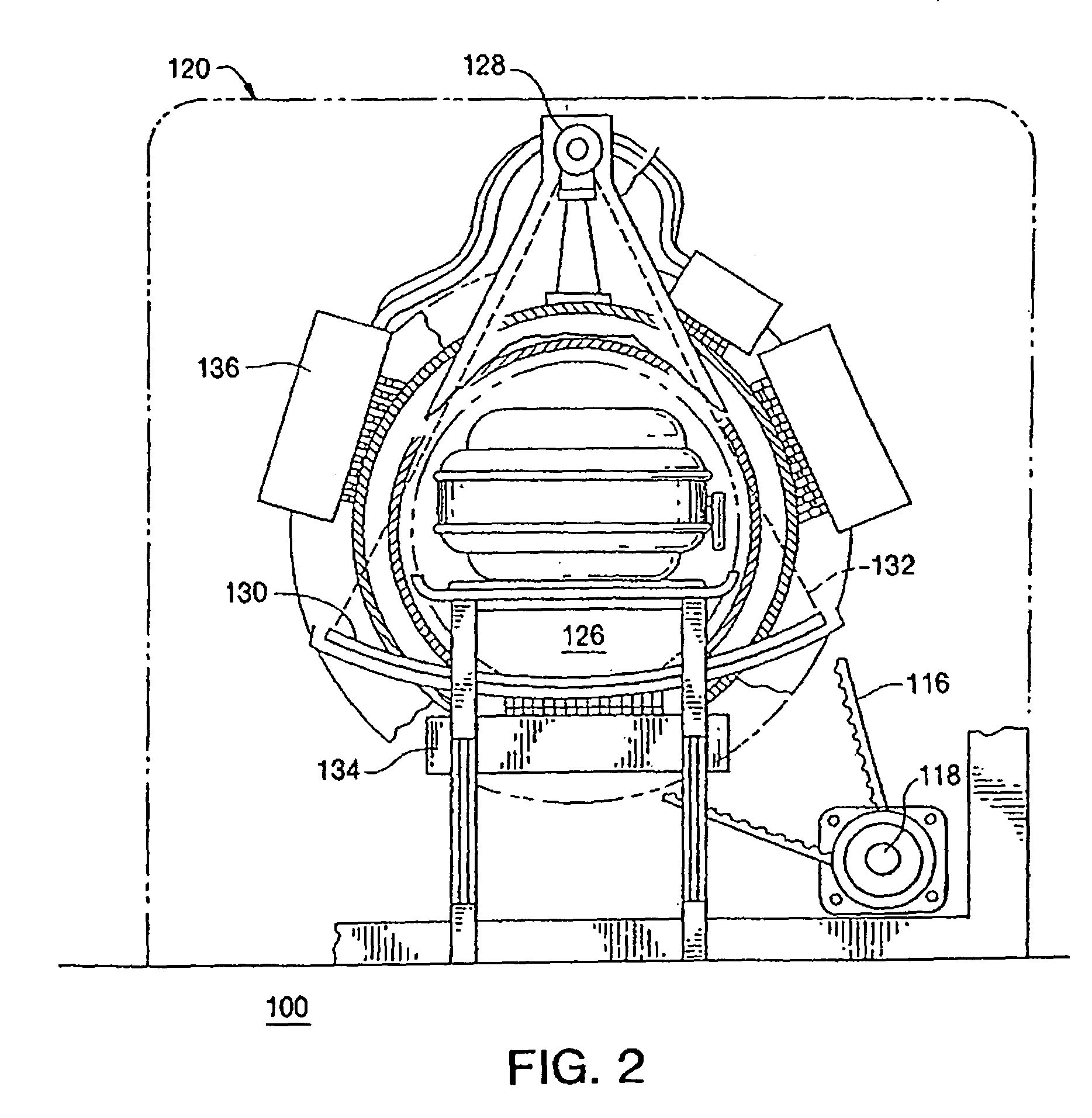Decomposition of multi-energy scan projections using multi-step fitting
a multi-energy scan and projection technology, applied in the field of decomposition of multi-energy scan projections, systems and methods for detecting explosive materials using xray radiation transmission, can solve the problems of difficult detection of plastic explosives, difficult to see explosive materials, difficult to detect, etc., and achieve the effect of quick performance and free from nois
- Summary
- Abstract
- Description
- Claims
- Application Information
AI Technical Summary
Benefits of technology
Problems solved by technology
Method used
Image
Examples
Embodiment Construction
[0052]In accordance with the present invention, a dual energy decomposition algorithm is provided that better separates objects with fewer artifacts and produces fewer false alarms, and preferably uses at least a two step fitting process, generally referred to as “dual energy decomposition with multi-step fitting”. A decomposition algorithm in accordance with the present invention may also use a calibration procedure that is based at least in part, if not entirely, on simulated data, and therefore is quick to perform and free from noise often introduced by other forms of calibration data. The calibration procedure may also be performed using measured data or a combination of simulated data and measured data. Preferably, such a calibration procedure is not machine-specific and can be done once per scanner design. In still other embodiments, a noise reduction module or step may be included prior to processing of projection data. Given that the calibration procedure and the dual energy...
PUM
| Property | Measurement | Unit |
|---|---|---|
| PL | aaaaa | aaaaa |
| PH | aaaaa | aaaaa |
| energy | aaaaa | aaaaa |
Abstract
Description
Claims
Application Information
 Login to View More
Login to View More - R&D
- Intellectual Property
- Life Sciences
- Materials
- Tech Scout
- Unparalleled Data Quality
- Higher Quality Content
- 60% Fewer Hallucinations
Browse by: Latest US Patents, China's latest patents, Technical Efficacy Thesaurus, Application Domain, Technology Topic, Popular Technical Reports.
© 2025 PatSnap. All rights reserved.Legal|Privacy policy|Modern Slavery Act Transparency Statement|Sitemap|About US| Contact US: help@patsnap.com



